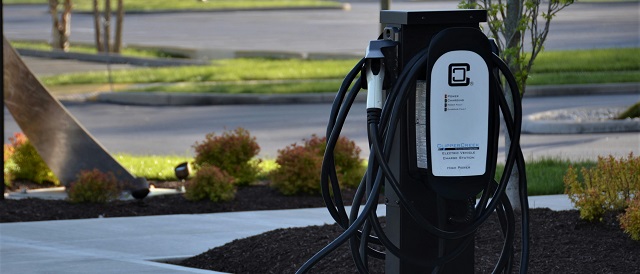Business
Growing the government won’t help Canada’s economy

From the Fraser Institute
By Jake Fuss and Grady Munro and Alex Whalen
Empirical research suggests that economic growth is maximized when the size of government falls between 24 and 32 per cent of GDP. In other words, when governments spend in excess of this range, the economy will not grow as much as it would if government operated within that threshold
Canada is suffering from an economic growth crisis, and governments across the country should reassess their policies. Governments (particularly the federal government) have recently taken a more active role in the economy through increased spending and bureaucracy. However, policymakers must take a step back and recognize that growing government doesn’t lead to growth in the economy.
Canada’s economy has been stagnant for the last decade. From 2013 to 2022, per-person GDP (a broad measure of living standards) grew at its slowest pace since the 1930s, after accounting for inflation. And more recent data shows that in the fourth quarter of 2023, per-person GDP (inflation-adjusted) stood at $58,111—which is $51 per person lower than it was at the end of 2014. Simply put, Canadians have experienced a decade of dismal growth, and are now actually worse off than they were a decade ago.
During this time, many governments in Canada have adopted an approach of greater involvement in the economy and significantly higher spending. Take the federal government, for example.
Since 2014/15, the government has increased annual program spending (total spending minus debt interest) by roughly 75 per cent, from $256.3 billion to $448.2 billion in 2022/23. Moreover, the Trudeau government has recorded the five-highest years of federal spending in Canadian history, after accounting for population growth and inflation. Much of this spending has gone towards expanding Ottawa’s role in the economy through increased transfers, business subsidies or new programs such as $10-a-day daycare and national dental care.
Provincial governments in Quebec, Nova Scotia and British Columbia (to name a few) have also recently reached historical highs in per-person program spending (even after excluding COVID-related spending). Simply put, governments across the country have been increasing spending and becoming more involved in the economy.
One way to measure the size of government, that allows for the comparison of jurisdictions over time, is known as total consolidated government spending as a share of GDP. This measure includes all spending at the local, provincial and federal levels in a jurisdiction and compares that level to the size of the economy.

According to a recent study, in 2022 (the latest year of available data) the size of government in Canada was 40.5 per cent of GDP compared to 38.2 per cent in 2014.
Among the provinces, total government spending ranged from 26.8 per cent of GDP in Alberta to 63.0 per cent of GDP in Nova Scotia. Compared to 2014, the size of government grew in eight of 10 provinces—only Prince Edward Island and B.C. experienced declines in government spending as a share of the economy. It’s also important to note that this is simply government spending. The true size of government, when accounting for things like regulation, is even larger.
Growing government matters because it influences economic growth. When the size of government is below a certain level, it lacks the resources to deliver services such as policing, courts or national defence—which are essential to a functioning economy. On the other hand, when government is too big it engages in activities best left to the free market and effectively crowds-out private-sector activity that contributes to economic growth. Therefore, when a government is too small or too big, economic growth (and consequently living standards) suffer.
Empirical research suggests that economic growth is maximized when the size of government falls between 24 and 32 per cent of GDP. In other words, when governments spend in excess of this range, the economy will not grow as much as it would if government operated within that threshold—all else equal. Based on the numbers presented above, it’s clear the vast majority of governments in Canada are too big. For nine of 10 provinces and the federal government, their spending exceeded 32 per cent of GDP in 2022.
As Canadians look for solutions to address a stagnating economy and falling living standards, governments should recognize that taking a more active role in the economy won’t solve the problem—and will likely make it worse.
Authors:
Automotive
Red States Sue California and the Biden Administration to Halt Electric Truck Mandates

From Heartland Daily News
By Nick Pope
“California and an unaccountable EPA are trying to transform our national trucking industry and supply chain infrastructure. This effort—coming at a time of heightened inflation and with an already-strained electrical grid—will devastate the trucking and logistics industry, raise prices for customers, and impact untold number of jobs across Nebraska and the country”
Large coalitions of red states are suing regulators in Washington, D.C., and California over rules designed to effectively require increases in electric vehicle (EV) adoption.
Nebraska is leading a 24-state coalition in a lawsuit against the Environmental Protection Agency’s (EPA) recently-finalized emissions standards for heavy-duty vehicles in the U.S. Court of Appeals for the D.C. Circuit, and a 17-state coalition suing the state of California in the U.S. District Court for the Eastern District of California over its Advanced Clean Fleet rules. Both regulations would increase the number of heavy-duty EVs on the road, a development that could cause serious disruptions and cost increases across the U.S. economy, as supply chain and trucking sector experts have previously told the Daily Caller News Foundation.
“California and an unaccountable EPA are trying to transform our national trucking industry and supply chain infrastructure. This effort—coming at a time of heightened inflation and with an already-strained electrical grid—will devastate the trucking and logistics industry, raise prices for customers, and impact untold number of jobs across Nebraska and the country,” Republican Nebraska Attorney General Mike Hilgers said in a statement. “Neither California nor the EPA has the constitutional power to dictate these nationwide rules to Americans. I am proud to lead our efforts to stop these unconstitutional attempts to remake our economy and am grateful to our sister states for joining our coalitions.”
(RELATED: New Analysis Shows Just How Bad Electric Trucks Are For Business)
While specifics vary depending on the type of heavy-duty vehicle, EPA’s emissions standards will effectively mandate that EVs make up 60% of new urban delivery trucks and 25% of long-haul tractors sold by 2032, according to The Wall Street Journal. The agency has also pushed aggressive emissions standards for light- and medium-duty vehicles that will similarly force an increase in EVs’ share of new car sales over the next decade.
California’s Advanced Clean Fleet rules, meanwhile, will require that 100% of trucks sold in the state will be zero-emissions models starting in 2036, according to the California Air Resources Board (CARB). While not federal, the California rules are of importance to other states because there are numerous other states who follow California’s emissions standards, which can be tighter than those required by the EPA and other federal agencies.
Critics fear that this dynamic will effectively enable California to set national policies and nudge manufacturers in the direction of EVs at a greater rate and scale than the Biden administration is pursuing.
Trucking industry and supply chain experts have previously told the DCNF that both regulations threaten to cause serious problems for the country’s supply chains and wider economy given that the technology for electric and zero-emissions trucks is simply not yet ready to be mandated at scale, among other issues.
Neither CARB nor the EPA responded immediately to requests for comment.
Nick Pope is a contributor to The Daily Caller News Service.
Originally published by The Daily Caller. Republished with permission.
Automotive
New Analysis Shows Just How Bad Electric Trucks Are For Business

 From the Daily Caller News Foundation
From the Daily Caller News Foundation
By WILL KESSLER
Converting America’s medium- and heavy-duty trucks to electric vehicles (EV) in accordance with goals from the Biden administration would add massive costs to commercial trucking, according to a new analysis released Wednesday.
The cost to switch over to light-duty EVs like a transit van would equate to a 5% increase in costs per year while switching over medium- and heavy-duty trucks would add up to 114% in costs per year to already struggling businesses, according to a report from transportation and logistics company Ryder Systems. The Biden administration, in an effort to facilitate a transition to EVs, finalized new emission standards in March that would require a huge number of heavy-duty vehicles to be electric or zero-emission by 2032 and has created a plan to roll out charging infrastructure across the country.
“There are specific applications where EV adoption makes sense today, but the use cases are still limited,” Karen Jones, executive vice president at Ryder, said in an accompanying press release. “Yet we’re facing regulations aimed at accelerating broader EV adoption when the technology and infrastructure are still developing. Until the gap in TCT for heavier-duty vehicles is narrowed or closed, we cannot expect many companies to make the transition, and, if required to convert in today’s market, we face more supply chain disruptions, transportation cost increases, and additional inflationary pressure.”
Due to the increase in costs for businesses, the potential inflationary impact on the entire economy per year is between 0.5% and 1%, according to the report. Inflation is already elevated, measuring 3.5% year-over-year in March, far from the Federal Reserve’s 2% target.
Increased expense projections differ by state, with class 8 heavy-duty trucks costing 94% more per year in California compared to traditional trucks, due largely to a 501% increase in equipment costs, while cost savings on fuel only amounted to 52%. In Georgia, costs would be 114% higher due to higher equipment costs, labor costs, a smaller payload capacity and more.
The EPA also recently finalized rules mandating that 67% of all light-duty vehicles sold after 2032 be electric or hybrid. Around $1 billion from the Inflation Reduction Act has already been designated to be used by subnational governments in the U.S. to replace some heavy-duty vehicles with EVs, like delivery trucks or school buses.
The Biden administration has also had trouble expanding EV charging infrastructure across the country, despite allotting $7.5 billion for chargers in 2021. Current charging infrastructure frequently has issues operating properly, adding to fears of “range anxiety,” where EV owners worry they will become stranded without a charger.
-

 Brownstone Institute2 days ago
Brownstone Institute2 days agoThe WHO’s Proposed Pandemic Agreements Worsen Public Health
-

 Health2 days ago
Health2 days agoTHE WPATH TAPES: Behind-The-Scenes Recordings Reveal What Top Gender Doctors Really Think About Sex Change Procedures
-

 John Stossel2 days ago
John Stossel2 days agoProtecting Free Speech: The Early Warning Signs From Around The World
-

 armed forces2 days ago
armed forces2 days agoTrudeau government has spent $10 million promoting DEI in the military as recruitment flounders
-

 COVID-192 days ago
COVID-192 days agoTrudeau’s public health agency recommends another experimental COVID booster
-

 Addictions2 days ago
Addictions2 days agoPoilievre attacks decriminalization of hard drugs with Safe Hospitals Act
-

 COVID-191 day ago
COVID-191 day agoJapan’s most senior cancer doctor: COVID shots are ‘essentially murder’
-

 RCMP2 days ago
RCMP2 days agoRed Deer RCMP use drone to find assault suspect in wooded area





